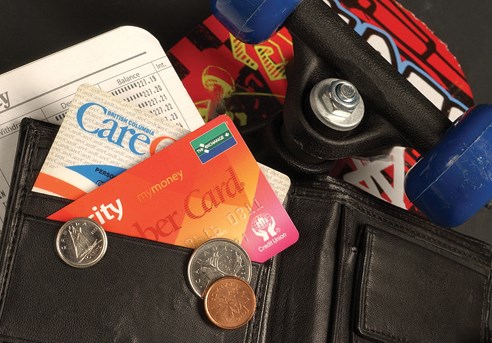National Family Week runs from Oct. 6 to 12.
It is a campaign first proclaimed by the Government of Canada in 1985 and co-ordinated by The Canadian Association of Family Resource Programs (FRP Canada) annually.
Each year the co-ordinators choose a theme, and this year the theme is Family and Finances - It just adds up! Financial literacy is important for all families, and it is a skill children need to learn in order to become independent and capable young men and women.
This is an important theme, and National Family Week gives us the opportunity to think about teaching our children about money. We teach them to brush their teeth, to look both ways before crossing the street, to eat well, to watch their manners and so on. But when it comes to money we often give them an allowance but don't really think about teaching them any details about money management.
So what are some of the aspects of learning about money and budgeting that we can teach them? Young children tend to think that a bigger coin is worth more so they prefer a nickel to a dime. First they need to learn about the relative value of money so we can teach them the value of different coins and paper money. This can be co-ordinated with teaching them how to count. So when they can count to 10 they can learn about nickels and dimes.
Quarters, loonies and bills can be added as their ability to count grows.
Kids see us use money to pay for items. They also see us use plastic to pay. When we're buying things we should talk to them about what is happening. What are we buying? How much does it cost? Buy them a toy cash register and some toy goods so they can play store. They can pretend to buy food or products with play money and learn about budgeting and making change.
Once they are old enough you can also pull out some old-fashioned board games like monopoly that use money and let kids practise counting. The board games are preferable to electronic games because when the kids physically handle the play money it makes a bigger impact.
It's important for us to help our children learn that there is not a limitless amount of money. That's a more challenging teaching task today than in previous generations because the kids see us simply hand over a credit card and voilà, we now own the product.
There is no real connection between the money needed to make the purchase and the actual transaction. It's even more confusing when they see money magically spit out of a cash machine. Unless we explain, they will reasonably assume that the wall somehow provides unlimited amounts of cash.
For these reasons it's a good idea to start your children off with cash. Give them an allowance and make it in cash. Help them to see how much money they have and how they can spend it. They can take the money and divide it into piles (kids love to sort and stack). They may have one pile for saving, one for spending and one for charity. You may want to take them to the bank to open an account so they can watch the money grow each time they make a deposit.
When your children are teenagers you can consider giving them a credit card, having them purchase clothes with a pre-determined clothing allowance, and suggest that they consider getting a part-time job.
We are our children's role models. They will learn about money from us. Do we carefully consider what we are buying? Do we save some money for holidays or special events? It's not just a question of behaving in financially healthy ways; we also need to talk to the kids about what we are doing.
Let them know how you make your financial decisions. For example, instead of simply saying we can't buy something they want, explain you are saving for summer holidays. Your good example is the best teaching tool you have. FRP Canada has a range of resources on family literacy (frp.ca/FinancialLiteracy).
Kathy Lynn is a professional speaker and author of Vive la Différence, Who's In Charge Anyway? and But Nobody Told Me I'd Ever Have to Leave Home. parentingtoday.ca.



